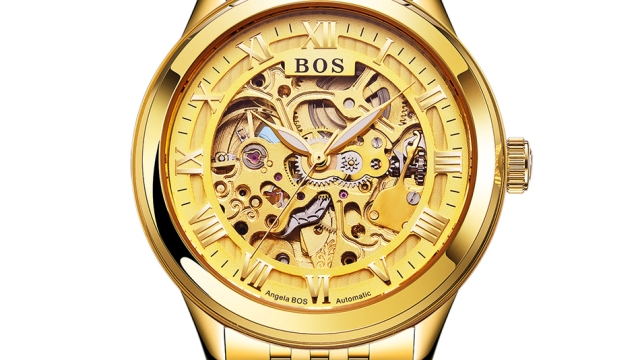Caps and Gowns: A Symbol of Achievement
Graduation is a momentous occasion in every student’s life, marking the culmination of years of hard work and dedication. As the day approaches, students eagerly prepare for the grand ceremony, and a significant aspect of this preparation is selecting the appropriate attire – the graduation cap and gown. These iconic symbols have long been associated with academic achievement, and they hold great significance in the hearts of graduates worldwide.
The graduation cap, also known as the mortarboard, is a distinctive headpiece that has become synonymous with the completion of one’s educational journey. Typically made of black cloth with a flat square top, it features a tassel hanging from the center. The tradition of wearing the cap during commencement ceremonies dates back to medieval times, where it symbolized the achievement of a scholar. Today, it remains a proud emblem of academic accomplishment, proudly worn by graduates as they embark on the next chapter of their lives.
The gown, an elegant flowing robe, is another essential element of the graduation attire. These ceremonial robes have their roots in the medieval academic dress and have evolved into various styles and colors over the years. The most common color for graduation gowns is black, representing formality and solemnity. However, some institutions incorporate distinctive colors or patterns to denote specific fields of study or academic achievements. As graduates slip into their gowns, they become part of a long-standing tradition that connects them to countless generations of educated individuals who have come before them.
Together, the graduation cap and gown form a visual representation of the hard work and dedication that have led students to this significant milestone. They serve as a reminder of the knowledge gained, the challenges overcome, and the accomplishments achieved throughout the academic journey. Beyond their symbolic value, these attire choices also foster a sense of unity and pride among graduates, reinforcing the shared sense of achievement and camaraderie that accompanies this transformative life event.
In the following pages, we will delve deeper into the world of graduation caps and gowns, providing you with a comprehensive guide to help you navigate through the myriad of options and traditions. From the history and symbolism behind these iconic garments to tips on how to choose the right fit, we will ensure that you are well-prepared for this momentous occasion. So, join us as we unravel the significance of caps and gowns, and embark on a journey celebrating the invaluable pursuit of knowledge.
1. History and Significance of Graduation Caps and Gowns
Graduation caps and gowns have a long-standing tradition that dates back centuries. These iconic attire pieces hold great significance in the world of academia, symbolizing the hard work, dedication, and achievements of graduating students.
The origins of the graduation cap, also known as the mortarboard, can be traced back to medieval times. Scholars during this period would wear a similar hat called a biretta, which was commonly associated with intelligence and learning. Over time, the biretta evolved into the graduation cap we know today, characterized by its flat, square-shaped top and tassel.
The gown, on the other hand, has its roots in the everyday attire worn by intellectuals and scholars during the medieval era. In those times, universities were closely affiliated with the church, and many scholars were clergymen. The gown, often in dark colors such as black or dark blue, symbolized their affiliation with the clergy.
Today, graduation caps and gowns serve as a unifying symbol at commencement ceremonies worldwide. They create a sense of pride and accomplishment for the graduating class, representing the culmination of years of academic pursuit. The regalia is dressed uniformly, irrespective of individual achievements, highlighting the equality and unity among the graduates as they embark on their next journey in life.
2. Types and Styles of Graduation Caps and Gowns
Graduation caps and gowns come in a variety of types and styles to suit different preferences and academic traditions. Here, we will explore some of the common options available for this iconic attire.
-
Traditional Caps and Gowns:
One of the most popular choices for graduation ceremonies is the traditional cap and gown ensemble. These typically consist of a black gown with long sleeves, a square-shaped black cap (also known as a mortarboard), and a tassel that hangs from the cap’s top right corner. -
Academic Hoods:
In addition to the basic cap and gown, some academic institutions incorporate hoods into the graduation attire. Hoods vary in color and style, indicating the field of study and the academic degree being conferred. These hoods, worn draped over the back of the gown, add a vibrant and distinguished touch to the overall appearance. -
Customized Caps and Gowns:
To add a personal touch or align with specific institutional requirements, many graduates opt for customized caps and gowns. These variations can include different colors, fabric textures, or design elements that showcase the college or university name, crest, or insignia. Customized graduation attire allows individuals to express their unique identity while still adhering to the graduation dress code.

Choose the type and style that best represents your academic journey and aligns with your educational institution’s guidelines. Whether you go for the traditional attire, opt for an academic hood, or customize your cap and gown, remember that these choices symbolize the remarkable achievement of completing your academic endeavors.
3. How to Properly Wear and Maintain Graduation Caps and Gowns
To ensure a polished and dignified appearance on your graduation day, it is crucial to know how to properly wear and maintain your graduation caps and gowns. Here are some essential tips:
- doctoral tams
Wearing Your Graduation Cap: Place your graduation cap on your head with the mortarboard (flat square part) centered. The front of the cap should align with your forehead, ensuring a straight and balanced fit. Use bobby pins or clips to secure the cap in place if needed, making sure they are not visible. Avoid tilting the cap at an angle or wearing it too far back on your head.
-
Donning Your Graduation Gown: Wear the gown by slipping your arms through the sleeves and allowing it to drape down evenly over your shoulders. Make sure the front of the gown is facing forward, and the hem falls below your knees but above your ankles. Adjust the collar if necessary, ensuring it lies flat and neat.
-
Maintaining Your Graduation Attire: Before wearing the graduation gown, give it a gentle shake to remove any wrinkles or creases. If ironing is necessary, use low heat and protect the fabric by placing a thin cloth between the iron and the gown. As for the cap, avoid storing it in a cramped or folded position, as this can cause damage. Instead, store it in a container or box that allows it to retain its shape.
Remember, graduation day is a significant milestone, and properly wearing and maintaining your graduation caps and gowns reflects the respect and pride you have for your achievements.





